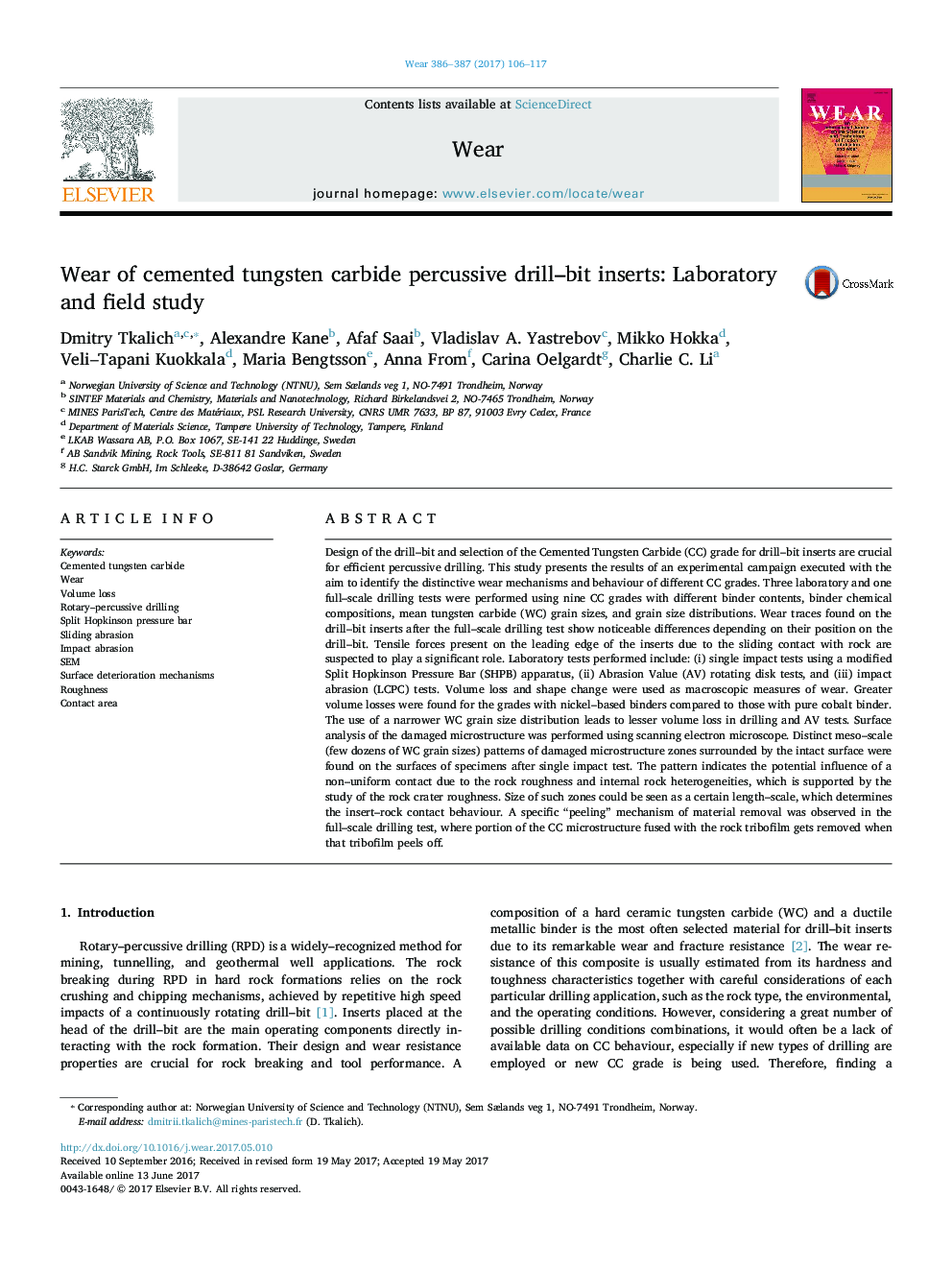| کد مقاله | کد نشریه | سال انتشار | مقاله انگلیسی | نسخه تمام متن |
|---|---|---|---|---|
| 4986438 | 1454947 | 2017 | 12 صفحه PDF | دانلود رایگان |
عنوان انگلیسی مقاله ISI
Wear of cemented tungsten carbide percussive drill-bit inserts: Laboratory and field study
ترجمه فارسی عنوان
استفاده از بتونه های مته حفره ای تنگستن کاربید سیمان: مطالعات آزمایشگاهی و میدانی
دانلود مقاله + سفارش ترجمه
دانلود مقاله ISI انگلیسی
رایگان برای ایرانیان
کلمات کلیدی
موضوعات مرتبط
مهندسی و علوم پایه
مهندسی شیمی
شیمی کلوئیدی و سطحی
چکیده انگلیسی
Design of the drill-bit and selection of the Cemented Tungsten Carbide (CC) grade for drill-bit inserts are crucial for efficient percussive drilling. This study presents the results of an experimental campaign executed with the aim to identify the distinctive wear mechanisms and behaviour of different CC grades. Three laboratory and one full-scale drilling tests were performed using nine CC grades with different binder contents, binder chemical compositions, mean tungsten carbide (WC) grain sizes, and grain size distributions. Wear traces found on the drill-bit inserts after the full-scale drilling test show noticeable differences depending on their position on the drill-bit. Tensile forces present on the leading edge of the inserts due to the sliding contact with rock are suspected to play a significant role. Laboratory tests performed include: (i) single impact tests using a modified Split Hopkinson Pressure Bar (SHPB) apparatus, (ii) Abrasion Value (AV) rotating disk tests, and (iii) impact abrasion (LCPC) tests. Volume loss and shape change were used as macroscopic measures of wear. Greater volume losses were found for the grades with nickel-based binders compared to those with pure cobalt binder. The use of a narrower WC grain size distribution leads to lesser volume loss in drilling and AV tests. Surface analysis of the damaged microstructure was performed using scanning electron microscope. Distinct meso-scale (few dozens of WC grain sizes) patterns of damaged microstructure zones surrounded by the intact surface were found on the surfaces of specimens after single impact test. The pattern indicates the potential influence of a non-uniform contact due to the rock roughness and internal rock heterogeneities, which is supported by the study of the rock crater roughness. Size of such zones could be seen as a certain length-scale, which determines the insert-rock contact behaviour. A specific “peeling” mechanism of material removal was observed in the full-scale drilling test, where portion of the CC microstructure fused with the rock tribofilm gets removed when that tribofilm peels off.
ناشر
Database: Elsevier - ScienceDirect (ساینس دایرکت)
Journal: Wear - Volumes 386â387, 15 September 2017, Pages 106-117
Journal: Wear - Volumes 386â387, 15 September 2017, Pages 106-117
نویسندگان
Dmitry Tkalich, Alexandre Kane, Afaf Saai, Vladislav A. Yastrebov, Mikko Hokka, Veli-Tapani Kuokkala, Maria Bengtsson, Anna From, Carina Oelgardt, Charlie C. Li,
